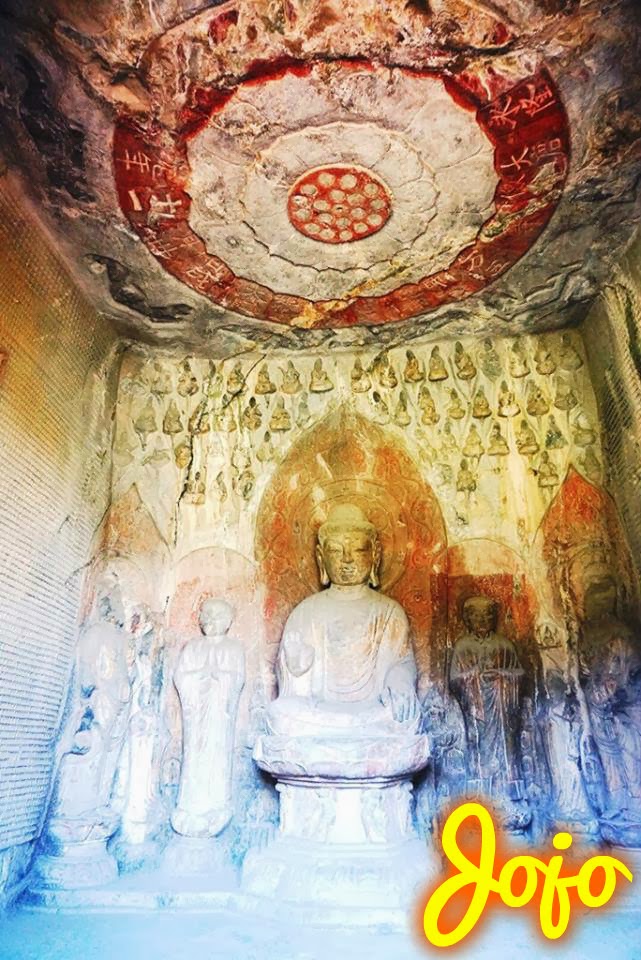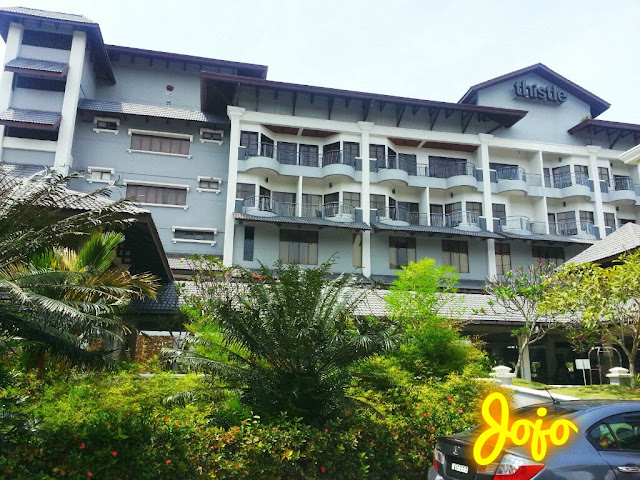China has a recorded history over 4,000 years. This time, i visited one of the China historical place which is Shaolin Temple known as 少林寺 is a Chan Buddhist temple on Mount Song, near Dengfeng, Zhengzhou, Henan province, China. The monastery is long famous for its association with Chinese martial arts and particularly with Shaolin Kung Fu.
Shaolin Temple is located in the foothills of the Song Shan mountain range just fifteen minutes outside the town of Dengfeng, which is about two hours away from Zhengzhou, the provincial capital of Henan.
Shaolin Temple embraces many exciting attractions, such as the Hall of Heavenly Kings (Tianwangdian), the Mahavira Hall (Daxiongbaodian), the Pagoda Forest, the Dharma Cave and the Martial Art Training Center. Visitors may follow the virtual guide about the Shaolin Temple.
In the early Qing Dynasty a sign board was hung on the outer wall with six chinese characters meaning 'Genuine Birthplace of Buddhism'. Another board with characters, Shao Lin Si (Shaolin temple), written by Emperor Kang Xi, was put up in 1704. It is now above the Entrance of the temple.
At the end of the 5th century, a monk named Ba Tuo, arrived in China from India. Emperor Xiao Wen of the Northern Wei Dynasty (386-534), a devout Buddhist, had deep respect for Ba Tuo and ordered the construction of the Shaolin Temple at the foot of the Shaoshi Mountain. Here, Monk Ba Tuo would disseminate Buddhism in the peaceful surroundings of lush forests to Buddhists who came from all over the country. Ba Tuo not only on imparted and taught Buddhism, he also wanted his disciples to be intelligent, capable, and good at martial arts. After Buddhabhadra , Bodhidharma is the second important Indian that went the Shaolin temple.
At this point, Damo was nearing Shaolin Monastery. The Shaolin monks had heard of his approach and had gathered to invite him to the temple.Behind the Shaolin Monastery there is a mountain peak named Five Breast Peak (Chin.: Wǔrǔfēng 五乳峰). When the Shaolin monks invited Damo to come stay at the temple, he did not reply. Instead, he immediately went to a cave which was located at the top of the mountain. Inside the cave Damo sat down facing a wall and immediately began meditating and faced a wall for nine years, not speaking for the entire time".
Damo sat in meditation for nine years to listen to the 'screaming of the ants'. Because of this long period of meditation in China he is also known as 'Holy man facing the wall'. The nine years of mediation were spend in a cave, near the Shaolin temple. The cave can still be visited; a walk there will take about 2 hours. The cave is simply know as 'Damo Tong', which means Damo's Cave. Because he spend such a long time in the cave his shadow was 'engraved' in a rock, so they say. The rock was later removed from the cave and taken to the Shaolin temple where it is displayed in the Guanyin Dian. Once he fell a sleep while meditating. He was so angry over this that he cut his eyelids and threw them on the floor. From his eyelids grew a tea plant, which the monks until this day use to keep awake during meditation.
Shenguang stayed outside Damo's cave and protected him from any wild animals or other threats. Periodically Shenguang would ask Damo to teach him but Damo would never reply. The Shaolin monks would also periodically visit Damo's cave and invite him to stay in the temple, where he would be much more comfortable. Damo would never reply. Towards the end of Damo's nine year meditation, the Shaolin monks decided to do something more for him. They prepared a special room for him which they called, fittingly, the Damo Pavilion (Chin.: Dámótíng 达摩亭). They then went back to the cave of Damo and invited him to stay in this room, where he would be much more comfortable. He did not reply but he responded by rising and walking down to the room.
Upon entering the room, Damo immediately sat down and began meditating. Shenguang followed Damo to the temple and stood guard outside his room while he meditated for another four years. Periodically, Shenguang would still ask Damo to teach him. Towards the end of the four years, Shenguang had followed Damo for thirteen years but Damo had never spoken a word to him.
After thirteen years of silence from Damo, Shenguang was standing outside of Damo's room in the wintertime. It was extremely cold, snow and ice covered the ground. Becoming enraged at Damo's silence, Shenguang picked up a large block of snow and ice and hurled it into Damo's room. The snow and ice struck the floor and Damo was awakened from his meditation. He looked at Shenguang and in anger and frustration, Shenguang demanded to know when Damo would teach him. Damo finally replied, saying that he would teach him when red snow fell from the sky.
When he heard this, something inside Shenguang changed and he took the sword from around his belt and cut off his left arm. Raising the severed arm above his head, Shenguang whirled the arm around. The blood from the arm froze as it fell in the cold air, like red snow.
Seeing this, Damo agreed to teach Shenguang. He asked him what it was he wanted from him. Shenguang asked Damo to pacify his mind. But when Damo asked Shenguang to hand him his mind so that he might pacify it, Shenguang was unable to find his mind. Damo then told him; "then I've already pacified it."
After his realization, Shen Guang was given the name Hui Ke and he became abbot of the Shaolin temple after Da Mo.
To pay respect for the sacrifice which Hui Ke made, disciples and monks of the Shaolin Temple greet each other using only their right hand.
The monastery has been destroyed and rebuilt many times. In 1641 the troops of anti-Ming rebel Li Zicheng sacked the monastery due to the monks’ support of the Ming and the possible threat they posed to the rebels. This effectively destroyed the temple’s fighting force.
Perhaps the best-known story of the Temple’s destruction is that it was destroyed by the Qing government for supposed anti-Qing activities. Variously said to have taken place in 1647 under the Shunzhi Emperor, in 1674 under the Kangxi Emperor, or in 1732 under the Yongzheng Emperor, this destruction is also supposed to have helped spread Shaolin martial arts through China by means of the five fugitive monks.
The last hundred years of Chinese history have been very turbulent, and the Shaolin Temple has been part of this. Over the course of history, the Shaolin Temple generally enjoyed great favor with the Chinese emperors, but was also destroyed many times by various warlords. One such instance was in 1928, when warlord Shi Yousan attacked the temple. It burned for 45 days, and many of the buildings, books, and records were destroyed.
When the People's Republic of China was established, all religion was outlawed. All training at Shaolin was of course prohibited. During the cultural revolution, the red guard destroyed even more of the buildings, statues, and other relics at the temple. During this time period, six monks stayed to protect temple and suffered the red guard's abuses. They were former abbot Shi Xingzheng, Shi Wanheng, Shi Suxi, Shu Suyun, Shi Dechan, and Shi Miaoxing.
The Four Heavenly Kings are four guardian gods, each of whom watches over one cardinal direction of the world. They reside on the lower slopes of Mount Sumeru, which is the lowest of the six worlds of the devas of the Kamadhatu. In Chinese temples, statues of the four are often placed symmetrically on both sides before the Hall of Heavenly Kings, hence its name.
On the orders of Śakra, the four kings and their retinues stand guard to protect Trāyastriṃśa from another attack by the Asuras, which once threatened to destroy the kingdom of the devas. They are also vowed to protect the Buddha, the Dharma, and the Buddha's followers from danger.
A tree within the Shaolin Monastery used by the monks to practice finger-punching.
The Kangxi Emperor of the Qing Dynasty was a supporter of Shaolin Temple, and he wrote the calligraphic inscriptions that still hang over the Heavenly King Hall and the Buddha Hall today.
The Pagoda Forest at Shaolin Temple refers to the 228 stone or brick pagodas built from 791 AD during the Tang Dynasty through the Song Dynasty, Yuan Dynasty, Ming Dynasty, and Qing Dynasty. The levels, or storeys, on the pagodas must be odd numbers (from 1 to 7) and are based on the achievements of the Buddhist masters they were built for. The higher the pagoda, the more high level of the monk. The era the pagodas were built, affects the shape (round or square) and the number of sides (4 or 6). The pagoda forest in Shaolin stands at the foot of Shaoshi Mountain and is one of the largest pagoda forests in China. It was named a national scenic spot in 1996 (and is now a UNESCO world heritage site).
Most of the Pagoda Forest is stone and brick structures, ranging from one to seven storeys, less than fifteen meters high -- much smaller than pagodas for Buddhist relics -- and all carry the exact year of their construction and many carvings and inscriptions. They are in a variety of styles, but are mainly multi-eaved and of pavilion-style. Their shapes are varied, including polygonal, cylindrical, vase, conical and monolithic, making the pagoda forest an exhibition of ancient pagodas, carvings and calligraphy of various dynasties. Besides the pagoda forest there are many invaluable tomb pagodas scattered around the Shaolin Temple, including the Faro Pagoda built in 689 in the Tang Dynasty, the Tongguang Pagoda constructed in 926 in the Five Dynasties, the Yugong Pagoda erected in 1324 in the Yuan Dynasty, and the Zhaogong Pagoda built in the Ming Dynasty.
少林寺 (Shaolin Temple)
How to get there : You may prebook a taxi or rent a private car from local travel agency in Luoyang which costs you around RMB 600 for a round trip.
For money saving and more interactive contact with the locals as well, you may go to Shaolin Temple by taking the long-distance bus from Luoyang Long-distance Station which is located across Luoyang Railway Station in the city center. Plentiful buses pass by Shaolin Temple. Just get up early and buy your bus ticket on the spot from Luoyang to Shaolin Temple.
Most of the Shaolin Temple bound buses run on National Highway No.207 and Shaolin Temple is just located by the highway 80km from Luoyang.
View Larger Map
























































